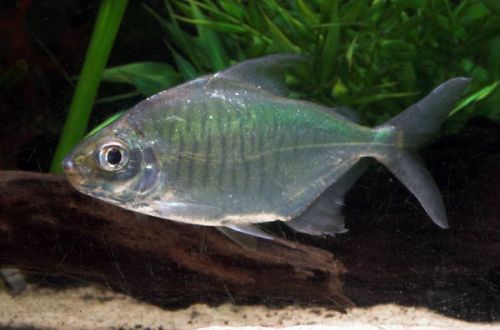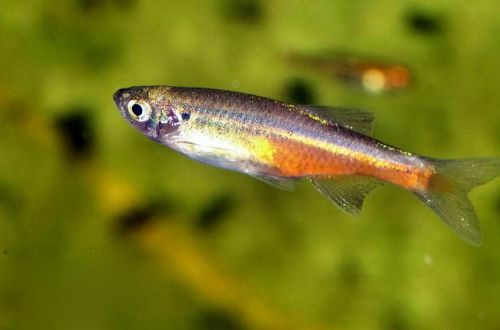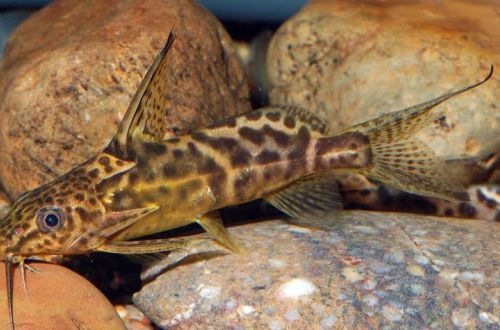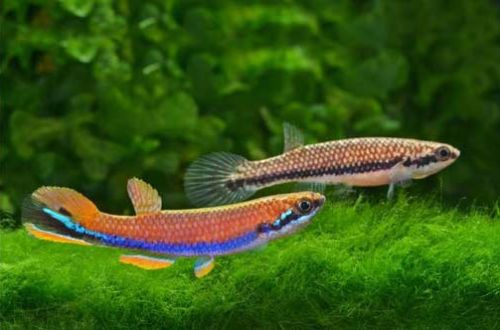
Paku-sheep
Aknodon Norman or Paku-sheep, scientific name Acnodon normani, belongs to the Serrasalmidae family. The fish is named after John Roxbrough Norman (1898-1944), who made a great contribution to the study of the fish fauna of the Amazonian rivers. The second name is colloquial and is associated with the structure of the head and the shape of the jaws, reminiscent of that of sheep. All the more amusing is the fact that this fish is sometimes called the Tiger Pacu because of the striped body pattern.
It is considered a simple and unpretentious fish, which will not cause great difficulties in keeping even a novice aquarist. Provided that the aquarium will be regularly serviced.

Contents
Habitat
It originates from South America from a section of the vast Amazon basin, bounded by the Xingu and Tocantins tributaries, in the Brazilian state of Para. Inhabits the main riverbeds. A typical biotope is a wide river flowing through open savannas, along the banks of which dense aquatic vegetation grows. The water is clean with a small amount of suspension, the bottom is sandy and gravel, interspersed with large stones and boulders.
Brief information:
- The volume of the aquarium – from 300 liters.
- Temperature – 22-28°C
- Value pH — 5.5–7.5
- Water hardness – 2–15 dGH
- Substrate type – any
- Lighting – any
- Brackish water – no
- Water movement – light or moderate
- The size of the fish is 12–13 cm.
- Nutrition – a diet of a variety of products (meat, vegetable)
- Temperament – conditionally peaceful
- Content – alone or in a group
Description
Adult individuals reach a length of 12–13 cm. The fish has an elongated diamond-shaped body, strongly compressed from the sides. The fins only emphasize this geometric shape. The coloration is silvery with greenish tints of scales. Sexual dimorphism is weakly expressed. Males can be distinguished by the elongated first rays of the anal fin, resembling a petal.
Food
Often in the literature there is a statement that this is a herbivorous species. However, he can adapt to taking a variety of foods. For example, dry flakes, pellets, frozen and live foods such as bloodworms, earthworms, insects. On occasion, it can eat small fish.
Maintenance and care, arrangement of the aquarium
The optimal size of the aquarium for a group of 2-3 fish starts from 300 liters. The format doesn’t really matter. Paku sheep will feel great even in a half-empty tank. The only limitation is that you should not use live plants that will most likely be eaten.
Successful long-term management depends on ensuring high water quality (free of contaminants) and keeping the hydrochemistry within the acceptable pH and dGH range. The stability of the aquatic environment depends on the uninterrupted operation of the installed equipment, in particular the filtration system, and the regularity of certain obligatory aquarium maintenance procedures, such as weekly replacement of part of the water with fresh water, removal of waste (remains of food, excrement), etc.
Behavior and Compatibility
The Brindle Pacu is quite peaceful, but this is true only in relation to congeners and other species of comparable or larger size. Any fish that can fit in his mouth is likely to be eaten, but not because of his aggression, just because of the nature of his diet.
Breeding / breeding
At the time of writing, the author has not found any information about the successful breeding of this species in home aquaria.
Fish diseases
It is an unpretentious and hardy fish. Health problems are associated with injuries, poor nutrition and inappropriate water composition. In the event of the appearance of signs of illness (lethargy, change in body shape, loss of appetite, etc.), it is sometimes enough to bring the conditions of detention back to normal so that the body copes with the problem. However, in some cases, medical treatment will have to be used. Read more about symptoms and treatments in the Aquarium Fish Diseases section.





